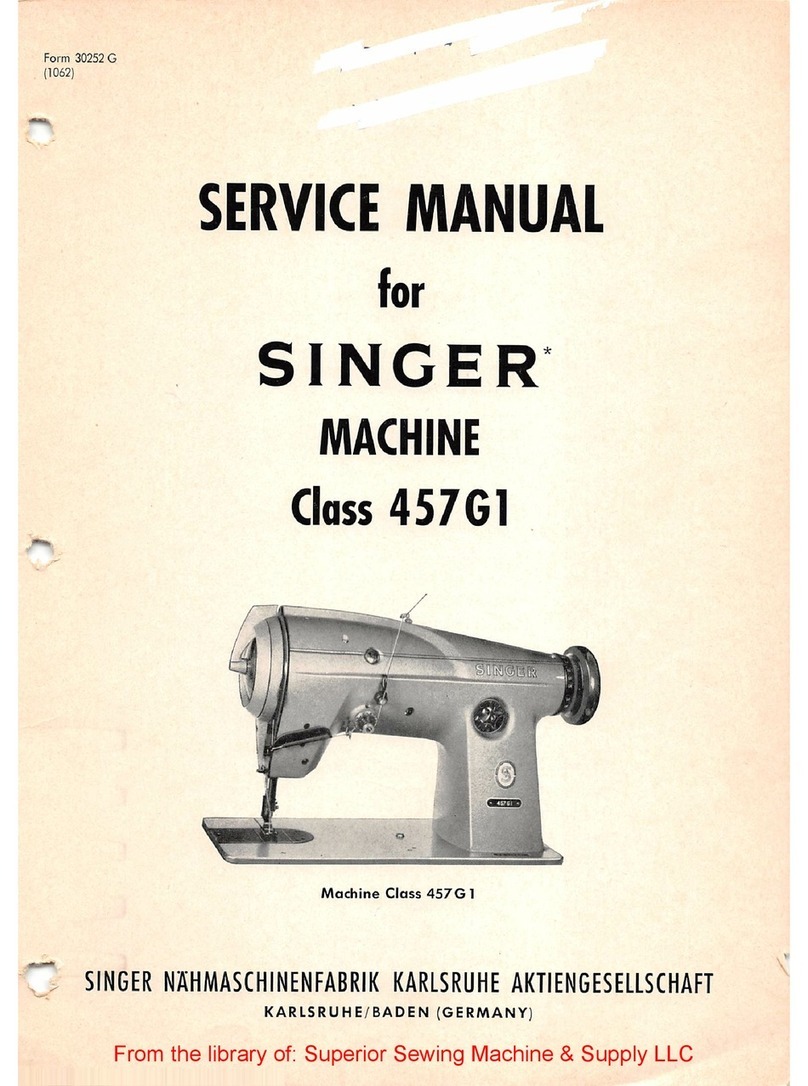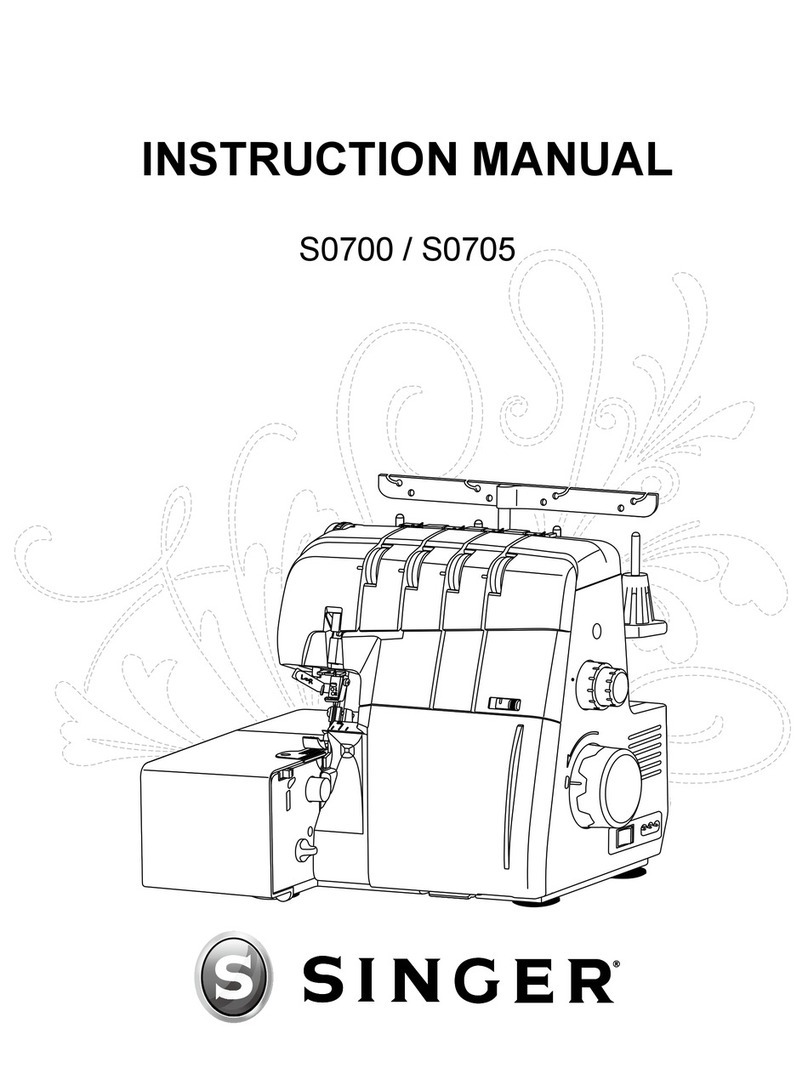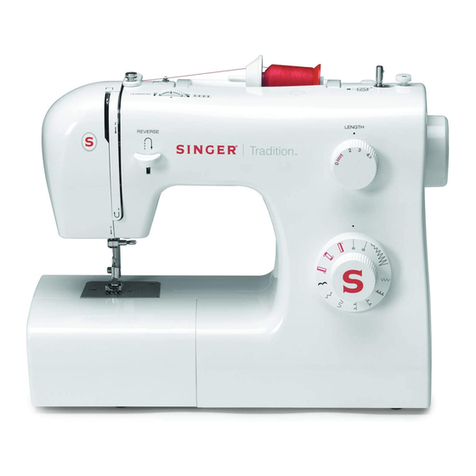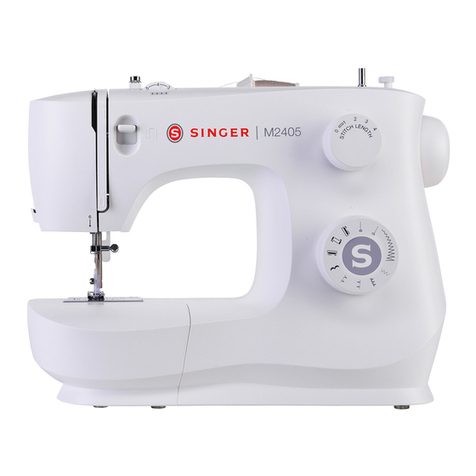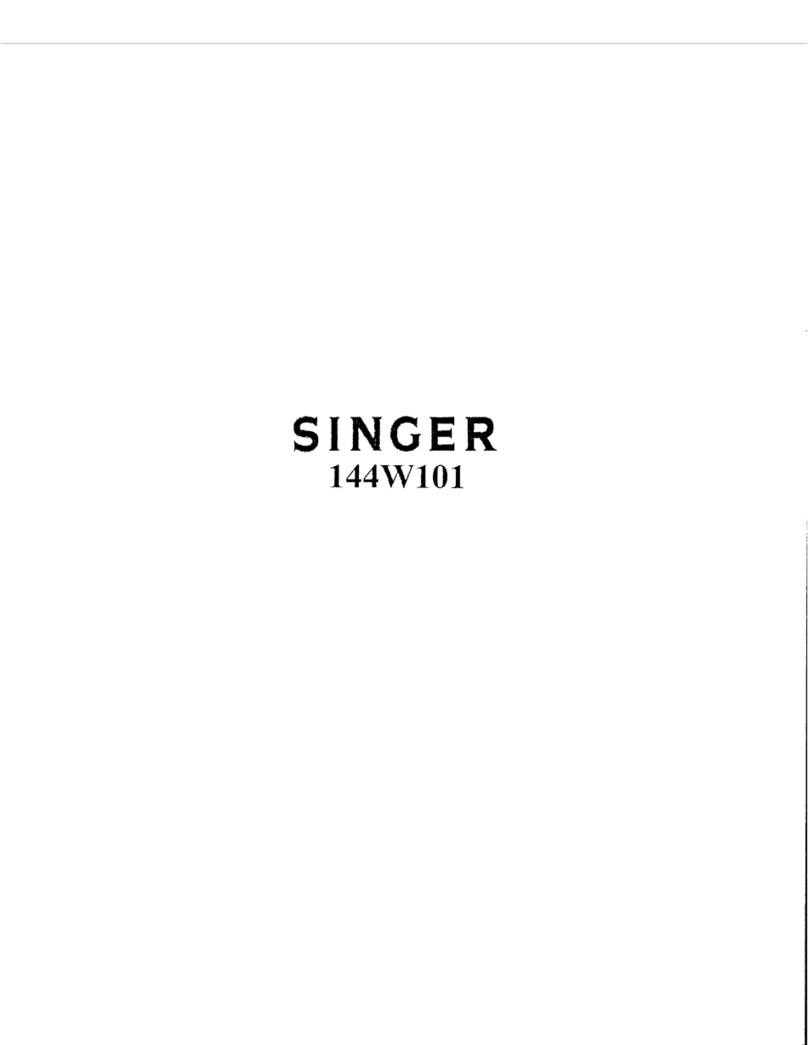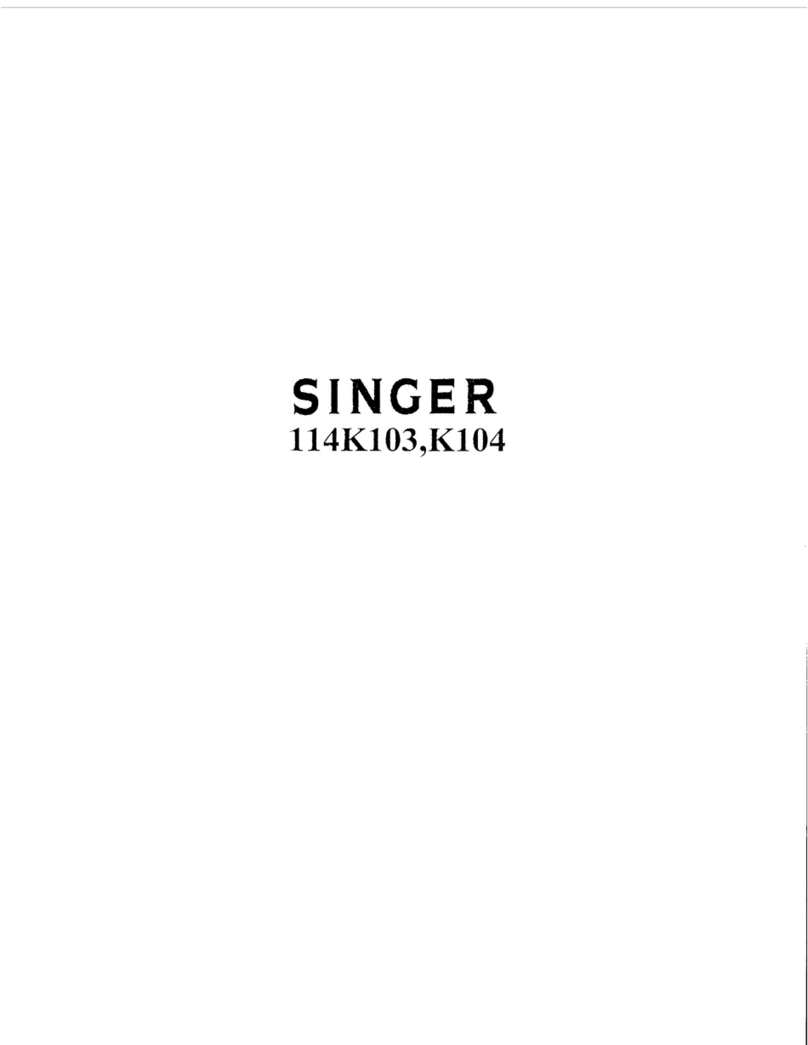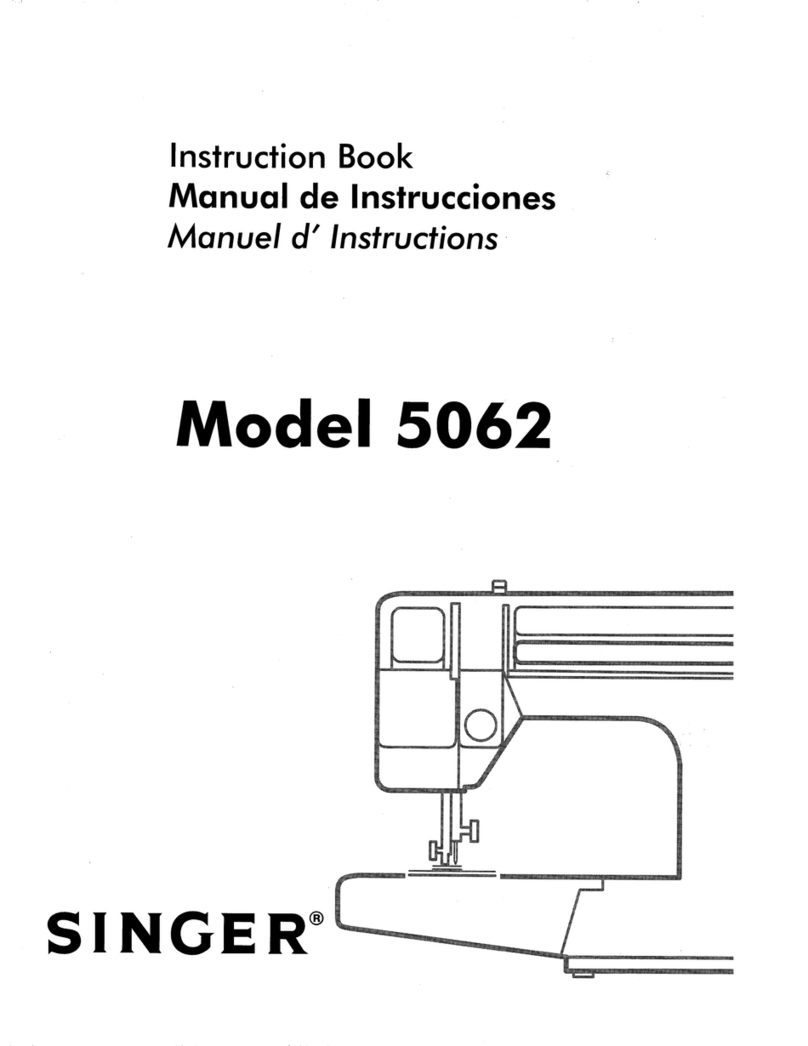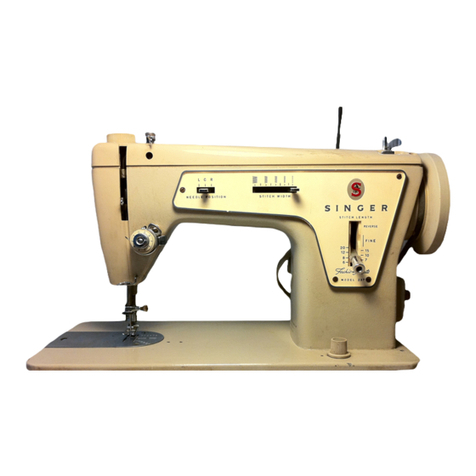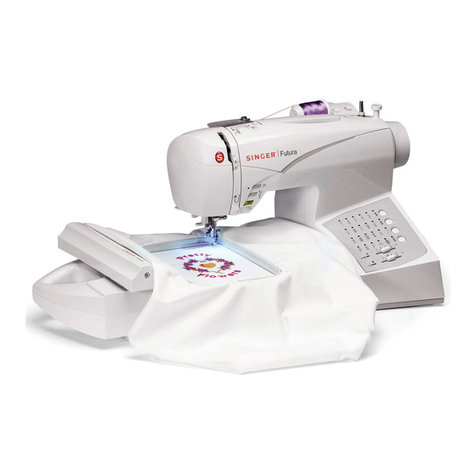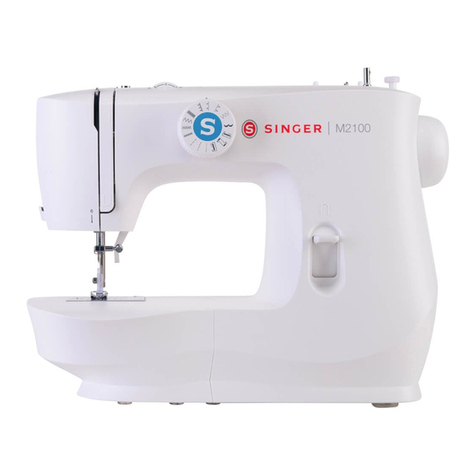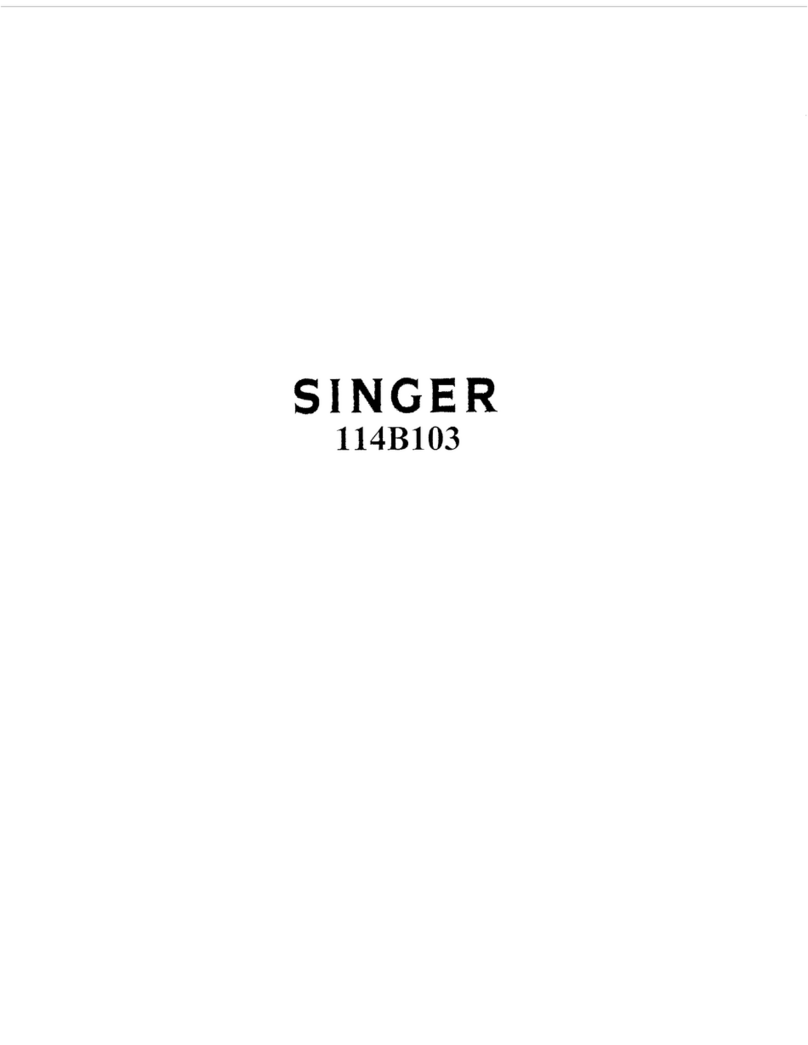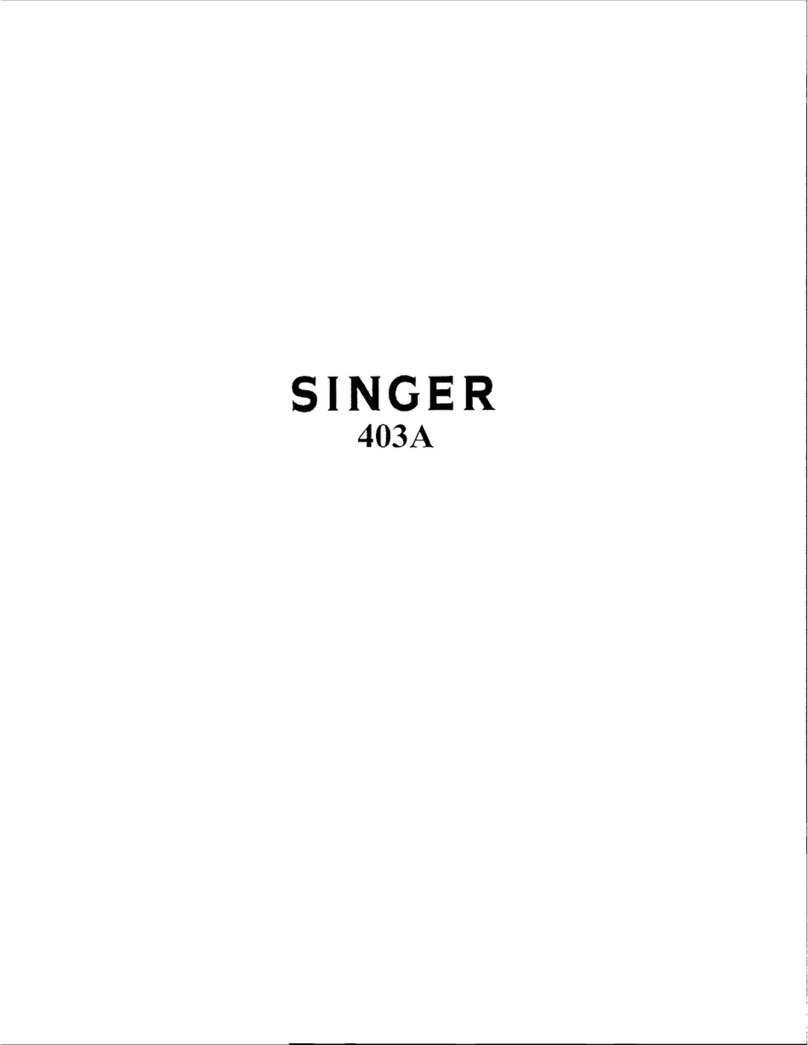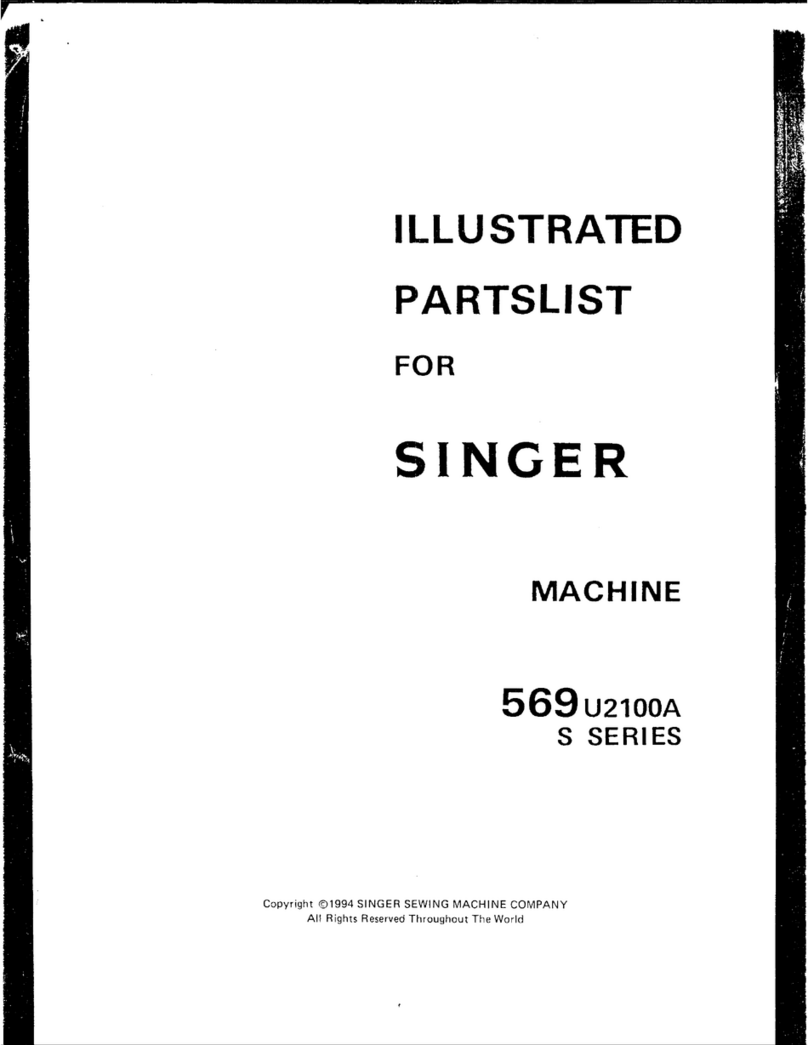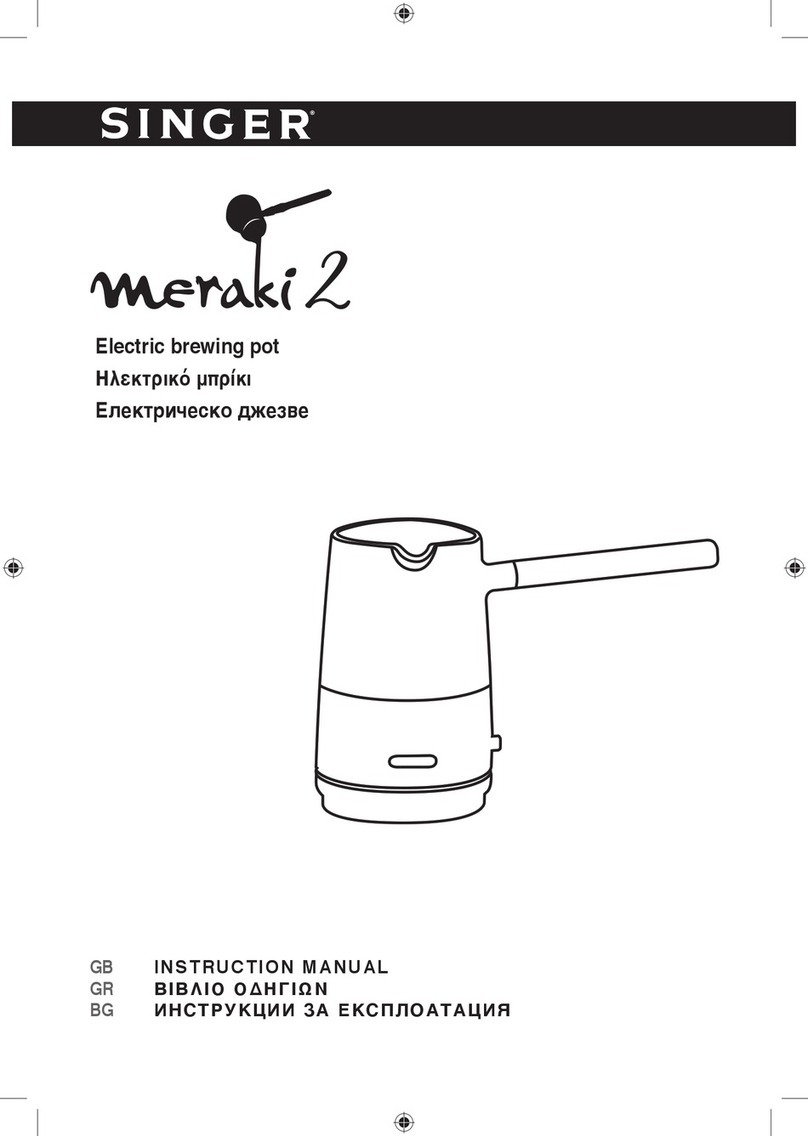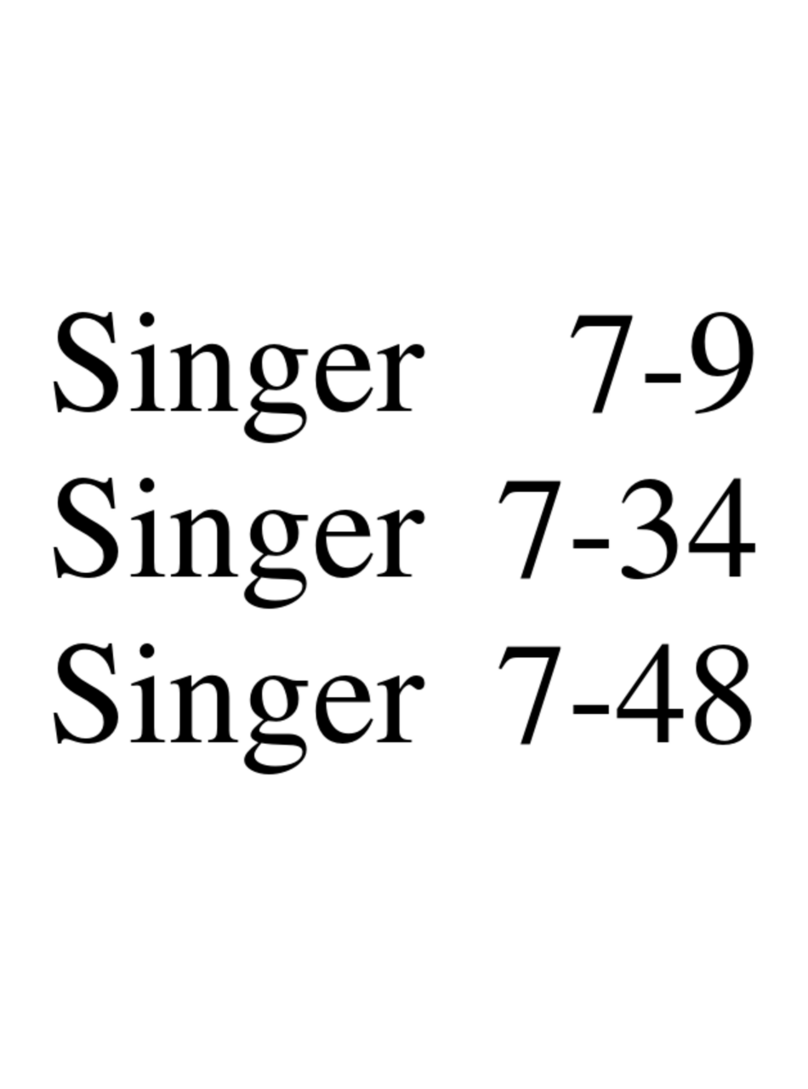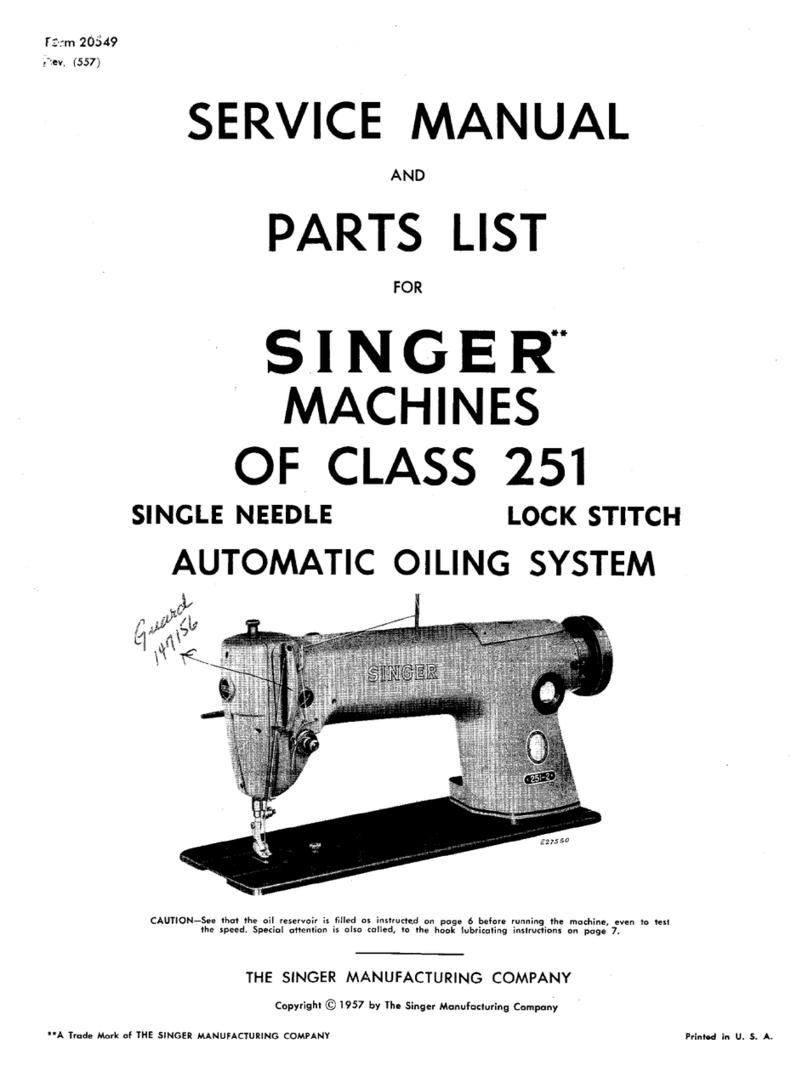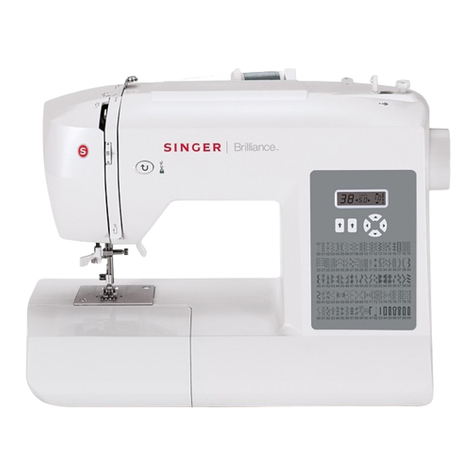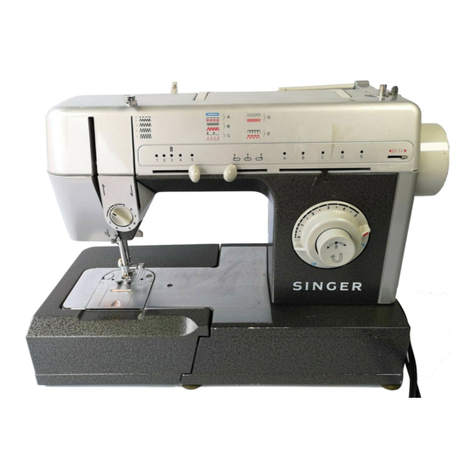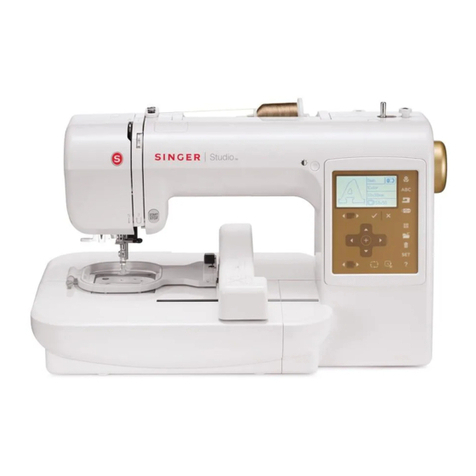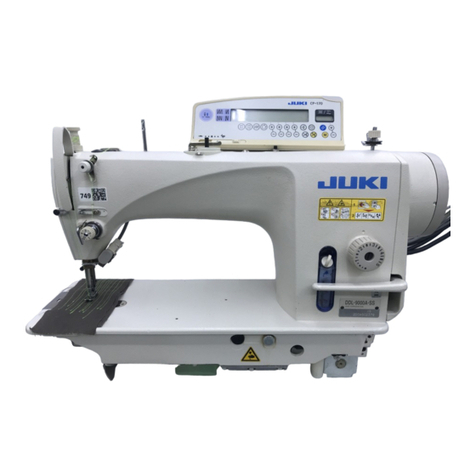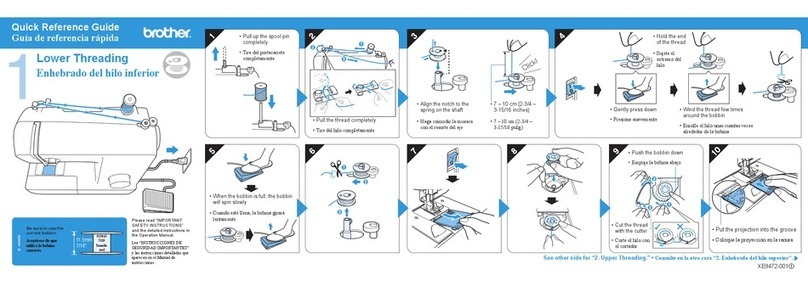TABLE DES MATIC:RES
CONSIGNES DE SECURITE IMPORTANTES .. 5
MODELE 9920 .................................................... 9
POUR LES TERRITOIRES EUROPEENS ET
ASSlMILES ......................................................... 9
PIECES PRINClPALES .................................... 11
ACCESSOIRES ................................................ 13
HOUSSE DE PROTECTION SOUPLE ............. 13
PLATEAU D'EXTENSlON ................................ 15
a. DEGAGER LE PLATEAU D'EXTENSION ............................. 15
b. OUVRIR LE COMPARTIMENT A ACCESSOIRES ............... 15
CHANGEMENT DE PIED PRESSEUR ............ 15
A. Changer de pied presseur ..................................................... 15
B. Oter le support du pied presseur ........................................... 15
MISE EN PLACE DE L'AIGUILLE .................... 17
TABLEAU DES TISSUS, FILS ET AIGUILLES 17
BRANCHEMENT DE LA MACHINE ................. 19
FONCTION DES PIECES ET TOUCHES ........ 21
A. TOUCHE DE MARCHE ARRIERE ........................................ 21
B. TOUCHE DE POSITIONNEMENT DE
L'AIGUILLE (HAUT/BAS) ...................................................... 21
C. TOUCHE DE L'AIGUILLE JUMELEE .................................... 21
D. RELEVEUR DE PIED PRESSEUR ....................................... 21
E. LEVlER DES GRIFFES ......................................................... 21
F. REGULATEUR DE PRESSION ............................................. 21
G. VOLANT ................................................................................ 21
H. CARTER SUPERIEUR .......................................................... 21
ECRAN D'AFFICHAGE .................................... 23
A. ECRAN LCD .......................................................................... 23
B. MOLETTE DE REGLAGE DU CONTRASTE ........................ 23
C. TABLEAU DES POINTS ........................................................ 23
D. TOUCHE DES POINTS UTILITAIRES .................................. 23
E. TOUCHE DE LETTRES ET POINTS DECORATIFS ............ 23
F. TOUCHES DE FONCTION ................................................... 23
G. TOUCHES DE CURSEUR .................................................... 23
H. TOUCHES DE DEFILAGE .................................................... 23
I. TOUCHE D'ANNULATION .................................................... 23
J. TOUCHE DE REGLAGE ....................................................... 23
CANETTE ......................................................... 25
A. RETIRER LA CANETTE ........................................................ 25
B. MISE EN PLACE DE LA BOBINE SUR LA TIGE A BOBINE 25
C. BOBINAGE DE LA CANETTE ............................................... 25
D. MISE EN PLACE DE LA CANETTE ...................................... 27
ENFILAGE DE LA MACHINE ........................... 29
A. PREPARATION EN VUE DE L'ENFILAGE ........................... 29
B. MISE EN PLACE DE LA BOBINE SUR LA TIGE A BOBINE 29
C. ENFILAGE DU FIL D'AIGUILLE ............................................ 29
D. ENFILAGE DU FIL DANS LE CHAS DE L'AIGUILLE ........... 31
E. REMONTER LE FIL DE CANETTE ....................................... 31
DEBUT DE LA COUTURE ................................ 33
A. DEBUT ET FIN DE LA COUTURE ........................................ 33
B. MARCHE ARRIERE .............................................................. 33
C. COUTURE DES ANGLES ..................................................... 35
D. COUTURE DE TISSUS EPAIS ............................................. 35
E. COUTURE DES SUREPAISSEURS ..................................... 35
F. LARGEUR DES RABATS ...................................................... 35
REGLAGE DE LA TENSION DU FIL ................ 37
SELECTION DES POINTS UTILITAIRES ........ 39
A. SELECTION DU POINT ........................................................ 39
B. POINT MIROIR /INVERSE ................................................... 39
C. REGLAGE DE LA LARGEUR ET DE LA LONGUEUR DU
POINT .................................................................................... 39
DESCRIPTION DES POINTS ........................... 41
COUTURE AU POINT DROIT .......................... 43
A. Point droit ............................................................................... 43
B. Point droit avec point d'arr6t automatique (n3) ..................... 43
COUTURE AU POINT ZIGZAG ........................ 45
POINT ZIGZAG MULTIPLE .............................. 45
COUTURE AVEC BRAS LIBRE ....................... 45
QUILTING ......................................................... 47
A. Assemblage des morceaux de tissu ....................................... 47
B. Quilting ................................................................................... 47
C. Point de quilting, apparence fair main (n6) ........................... 47
COUTURE DE POINTS ELASTIQUES ............ 49
SEQUENCE DE MOTIFS DECQRATIFS ......... 49
A. SUR LES TISSUS LEGERS .................................................. 49
SURJET - SURFILAGE .................................... 51
A. AVEC LE PIED DE SURJET .................................................. 51
B. AVEC LE PIED UNIVERSEL ................................................. 51
C. REMARQUE .......................................................................... 51
COUTURE D'OURLETS INVISIBLES .............. 53
PATCHWORK ................................................... 55
APPLIQUE ........................................................ 55
FERMETURE ,&,GLISSlERE - POSE BORD ,&,
BORD ............................................................ 57
FERMETURE ,&,GLISSlERE - POSE SOUS
PATTE ........................................................... 59
A. OUVRIR LA FERMETURE A GLISSIERE PENDANT LA
COUTURE ............................................................................. 59
COUTURE DE BOUTONNIERES .................... 61
ARRET ET REPRISAGE AUTOMATIQUES .,., 65
COUTURE DE BOUTONS ............................... 67
A. Bouton avec tige ..................................................................... 67
REPRISAGE/BRODERIE ................................. 69
A. MISE EN PLACE DU PIED BRODERIE ET REPRISAGE ..... 69
B. REPRISAGE .......................................................................... 69
C BRODERIE ............................................................................. 69
D. APRES LE REPRISAGE ET LA BRODERIE ......................... 69
COUTURE AVEC AIGUILLE JUMELEE ........... 71
COUTURE DE LETTRES ET POINTS
DECORATIFS ............................................... 73
A. SELECTION DE LETTRES ET POINTS DECORATIFS ........ 73
B. DEPLACEMENT DU CURSEUR ............................................ 73
C. VERIFICATION DES MOTIFS SELECTIONNES .................. 75
D. INSERTION DE MOTIFS ....................................................... 75
E. EFFACER UN MOTIF ............................................................ 75
F. REGLAGE INDIVlDUEL DES MOTIFS .................................. 75
G. COUTURE DU MOTIF SELECTIONNE ................................. 77
H ASTUCES .............................................................................. 77
TABLEAU DES LETTRES ET POINTS
DECORATIFS ................................................... 79
ENTRETIEN ...................................................... 81
NETTOYAGE .................................................... 81
SOLUTION AUX PROBLEMES COURANTS ... 83
[_ TTENTION! Pour eviter les incidents :
N'ouvrez pas le panneau frontal. 5
